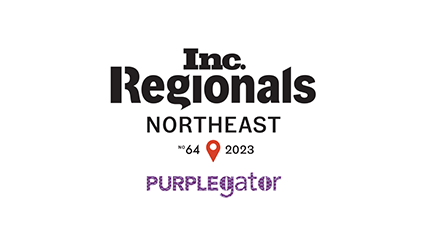Blog /
Real Estate Email Analytics & Optimization

Email is still one of the most powerful marketing tools in a real estate agent’s arsenal—but simply hitting “send” isn’t enough. Every email campaign creates valuable data that reveals how prospects engage, what drives conversions, and where untapped opportunities lie. Without tracking real estate email analytics, agents risk wasting time on ineffective messaging and missing chances to boost outreach.
When used strategically,real estate email analytics can directly impact client retention, lead nurturing, and sales growth. With the right data, agents can write stronger subject lines, time emails more effectively, and tailor messaging for specific audience segments. The payoff? More opens, better engagement, and ultimately, more closed deals.
This guide breaks down the essential metrics to track, tools that make the job easier, and how to turn insights into high-performing campaigns.
Why Real Estate Agents Must Track Real Estate Email Analytics
If you’re sending emails without checking how they’re performing, you’re missing half the story. Tracking key metrics isn’t just a nice add-on—it’s what turns good campaigns into great ones. Here’s why smart agents rely on email analytics to close more deals and build stronger relationships.
Email Marketing’s Role in Lead Nurturing & Conversions
Shooting in the dark is risky. Without real data, you could be sending emails at the wrong times, using subject lines that fall flat, or missing chances to reconnect with high-intent leads.
Performance metrics make all of this visible. Low open rates? Time to test new subject lines or change your send schedule. Weak click-throughs? Maybe your call-to-action needs a refresh or your layout needs simplifying. Analytics also flag cold or unengaged contacts—so you can clean up your list and keep your deliverability strong.
Bottom line: data removes the guesswork. And in real estate, that can mean the difference between a lost lead and a closed deal.
Why Data-Driven Decisions Lead to Better Email Performance
Guesswork is a wasted opportunity. Without analysis, agents will send emails to the wrong hours, with low-performing subject lines, or overlook re-engagement of high-intent leads. Email metrics of performance are easy to gain insight into what’s performing and what’s not.
For instance, when there are low open rates, send times or subject lines may be changed. If the click-through is slow, remaking calls-to-action or email design can switch the course around. Metrics also indicate unengaged contacts so email lists may remain clean and applicable.
The Importance of Real Estate Email Analytics
Email analytics are more than just numbers—they’re your roadmap to smarter, more effective marketing. When you track the right metrics, you can:
- Fine-tune your content, timing, and audience targeting
- Spot what’s actually working and make future emails even better
- Boost deliverability, engagement, and conversion rates
It’s not just about sending emails—it’s about sending the right message to the right people at the right time. Up next, we’ll break down the key metrics to watch, the best tools to track them, and how to turn that data into real results.
Key Real Estate Email Analytics to Track
If you’re not keeping an eye on how your emails are performing, you’re flying blind. These core metrics tell you what’s working, what’s not, and where you need to pivot. Let’s break them down:
1. Open Rate
What it tells you: How many people are actually opening your emails.
A healthy open rate for real estate emails usually falls between 20–30%, though this can vary depending on your list and message type.
How to boost it:
- Experiment with send times to match your audience’s habits
- Write subject lines that spark curiosity or promise value
- Personalize subject lines to make them more relevant
2. Click-Through Rate (CTR)
What it tells you: How many people are clicking the links inside your email.
This metric shows whether your message is compelling enough to drive action.
How to improve it:
- Stick to one main goal per email to avoid distractions
- Use clear, action-driven calls-to-action (CTAs)
- Add eye-catching buttons or visuals to guide the click
3. Conversion Rate
What it tells you: How many people took the action you wanted—like scheduling a call or signing up for listing alerts.
How to increase it:
- Make sure your landing pages are simple and conversion-friendly
- Keep the path to action short and smooth
- Deliver what you promised in the subject line and CTA
4. Bounce Rate
What it tells you: How many emails didn’t make it to the inbox.
High bounce rates can hurt your sender reputation and lower deliverability.
How to fix it:
- Regularly clean your list to remove inactive or invalid emails
- Avoid spammy language and weird formatting
5. Unsubscribe Rate
What it tells you: How many people opted out of future emails.
Some unsubscribes are normal—but if the number’s climbing, it’s worth a closer look.
How to reduce it:
- Segment your list so people get content that actually matters to them
- Don’t overwhelm subscribers with too many emails
6. Spam Complaint Rate
What it tells you: How many people marked your emails as spam.
Too many complaints can land you in the junk folder—or get you redlisted.
How to avoid it:
- Email only those who’ve clearly opted in
- Use a familiar, professional sender name and address
Monitoring these metrics isn’t just about numbers—it’s about understanding what your audience responds to so you can build stronger relationships and close more deals. Once you know what to track, the next step is choosing the right tools to help you stay on top of it all. Let’s look at the best tools for tracking and improving your real estate email performance.

Best Tools for Tracking Real Estate Email Analytics
You don’t need to be a data expert to make sense of email analytics—especially with the right tools. Whether you’re looking to track website traffic, monitor open and click-through rates, or automate follow-ups, these platforms make it easier to understand what’s working and what’s not. Here are some of the best tools to help real estate agents stay on top of their email performance.
Google Analytics (for Tracking Traffic from Emails)
If you’re driving leads to your website through emails, Google Analytics can show exactly how those visitors behave once they land. It helps you see which emails drive traffic, which pages get the most visits, and how those visitors convert—giving you a clearer picture of what’s working.
Email Marketing Platforms with Built-in Analytics
Platforms like Mailchimp, HubSpot, and ActiveCampaign offer robust analytics features. You can A/B test subject lines, see heatmaps of where people are clicking, and track open and engagement rates over time. These platforms make it easier to tweak and improve your strategy with every send.
CRM Software with Email Integration
CRMs like Salesforce, BoomTown, and Follow Up Boss don’t just store contacts—they track how leads interact with your emails. With built-in automation, you can follow up at the right time, send targeted campaigns, and keep engagement high without doing it all manually.
How to Optimize Real Estate Email Using Analytics
Tracking your metrics is only half the battle—what really moves the needle is knowing how to act on those insights. With the right data in hand, you can fine-tune your email campaigns to boost open rates, engagement, and conversions. Here’s how to turn analytics into smarter, more effective email marketing.
Improve Open Rates with Better Subject Lines
Your subject line is the first impression—make it count.
- Tap into curiosity, urgency, or personalization to grab attention fast.
- Run A/B tests to see which types of subject lines your audience responds to best.
- Steer clear of spammy tactics like all caps or misleading hooks—trust builds loyalty.
Boost Engagement with Personalized Content
Generic emails get ignored. Personalized ones get results.
- Break your list into segments—buyers, sellers, past clients, etc.—and tailor your message to each.
- Use names, locations, or property preferences to make the content feel relevant and timely.
- Share useful info like local market trends, new listings, or VIP-only offers to keep people clicking.
Optimize Send Times for Higher Engagement
Timing is everything—literally.
- Most real estate emails perform best on Tuesdays and Thursdays.
- Aim for windows when people typically check their inbox—like 8–10 AM or 4–6 PM.
- Don’t guess—test different days and times to find your sweet spot.
Reduce Bounce Rates & Improve Deliverability
Your emails are only effective if they actually reach people.
- Regularly clean your list to remove inactive or outdated addresses.
- Use a double opt-in process so you’re only emailing people who really want to hear from you.
- Keep formatting clean and avoid overload—too many links or large files can trigger spam filters.
Test & Improve Calls-to-Action (CTAs)
A strong CTA can turn interest into action.
- Use clear, action-oriented language like “Book a Tour” or “Get the Latest Listings.”
- Make your CTAs stand out with buttons or bold visuals—don’t bury them in plain text.
- Place them where they make the most sense, and align the offer with the email’s main message.
With the right mix of data and strategy, your email campaigns can go from forgettable to highly effective. By continuously analyzing performance and making small but meaningful tweaks, you’ll stay ahead of the curve—and top of mind with your audience.
Make Your Emails Work Harder for You
Tracking and optimizing your email campaigns is the key to unlocking better engagement and higher conversions. By focusing on the right metrics, testing different strategies, and using the best tools available, you can ensure every email you send is working its hardest for your business.
Don’t wait to start making data-driven changes! Small tweaks can lead to bigger results in open rates, click-throughs, and overall engagement. Ready to take the next step in optimizing your email campaigns? Let’s talk!









